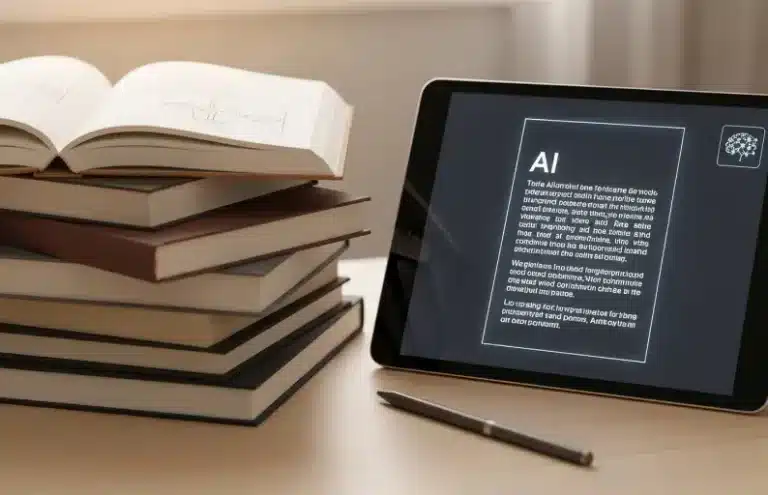Imagine this scenario: it’s the first week for a new employee who’s just joined the company, and they’re starting their onboarding training. Everything seems to be going smoothly—until they reach one of the modules and get stuck because they can’t quite grasp the content. This leads to wasted time, frustration, and a drop in motivation, as they don’t have the tools they need to overcome the obstacle and continue with their onboarding journey.
In the past, the technology behind e-learning platforms was mainly designed to support trainers and those responsible for delivering training—providing tools for content creation, monitoring, and management. Today, advances in technology, such as artificial intelligence, mean that this technology now also supports the learner, guiding them throughout the learning process and helping them overcome any barriers they may face—without needing to rely on anyone else.
What are the barriers to learning and why do they persist in the digital age?

- Emotional barriers: These emotional blocks can come from fear of failure, frustration at not being able to move forward, or anxiety about the final assessment—whether someone is preparing to get their driving licence or taking a leadership course within the company.
- Motivational barriers: Lack of feedback from trainers, absence of visible progress, or a sense of loneliness are some of the reasons why a learner may feel that lack of motivation and be more prone to giving up.
- Personal barriers: Not all learners have the same pace, learning style or even digital skills, which is why it’s so important to create customisable, adaptable learning paths and accessible materials for everyone.
From AI-powered course creation to personalised support: a paradigm shift
But how can AI help reduce barriers to learning? Many e-learning platforms already integrate tools that support learners during their learning journey.
From AI-powered course creation to personalised support: a paradigm shift

1. Emotional: instant support
2. Motivational: a proactive guide
A virtual tutor within LMS platforms not only supports trainers with predictive dashboards and course progress data, but also guides learners like a small virtual assistant available 24/7. It answers questions, clarifies doubts, sends notifications, motivational phrases, and even allows human tutors to send personalised messages when needed.
3. Personal: adaptive AI for different learning styles
Vedremo in futuro un apprendimento senza BAP?

Le difficoltà di apprendimento oggi sono più facili da superare che mai. Tutti i progressi tecnologici avvenuti nel mondo dell’e-learning, con nuove funzionalità e strumenti basati sull’intelligenza artificiale, permettono un apprendimento più personalizzato, rispettando i ritmi, le emozioni e le barriere di apprendimento di ogni discente.
L’obiettivo di un apprendimento senza barriere è che ogni persona possa imparare secondo il proprio modo di pensare e le proprie capacità, senza incontrare limitazioni lungo il percorso. Considerando la rapidità con cui si sta evolvendo l’IA, è lecito aspettarsi che in futuro le piattaforme siano in grado di identificare questi blocchi prima ancora che si presentino, grazie all’analisi predittiva.
Possiamo anche aspettarci una formazione iper-personalizzata, in grado di adattarsi a ogni discente tenendo conto di elementi come il tono di voce, il linguaggio del corpo o lo stile di scrittura. Questo significherà che non solo i corsi saranno su misura per le esigenze formativa, ma che l’intero ambiente di apprendimento online sarà progettato per comprendere profondamente ogni discente, con contenuti più immersivi e tutor virtuali consapevoli dello stato emotivo di ciascuno.
La personalizzazione è una delle grandi sfide dell’e-learning, e le piattaforme devono evolversi per restare competitive. In EvolMind continuiamo a migliorarci ogni giorno per definire un nuovo standard di accessibilità e personalizzazione, puntando su un apprendimento in cui tutti possano progredire, indipendentemente dal punto di partenza.
L’impatto per centri e aziende in termini di efficienza, retention e ROI formativo
La soddisfazione dei discenti non solo dimostra il successo di un corso, ma si traduce anche in benefici diretti per i centri e le aziende che lo propongono, migliorando l’efficienza, la retention e il ROI formativo.
Alcuni vantaggi dell’utilizzare piattaforme di e-learning che puntano a migliorare l’esperienza di apprendimento dei discenti sono:
- Lower dropout rates: Personalisation and motivation increase, raising course completion rates without requiring tutors to dedicate additional resources.
- Better use of human teams: Virtual assistants handle monitoring and instant feedback, reducing the need for staff intervention to only when it’s truly necessary, freeing up tutoring hours.
- Higher quality learning data: AI tools generate constant interaction with learners, helping them with exercises and texts.
- Greater perceived value: Centres and companies offering training enhanced with advanced AI stand out from the competition, making them more attractive both for acquiring new learners and for recruiting talent.
- Higher profitability: By improving success rates and learner satisfaction, organisations achieve greater employee loyalty, a more skilled workforce, and learners who choose to return for further training—thus increasing the return on investment of each programme.
